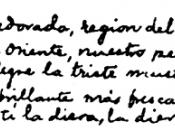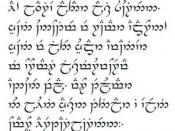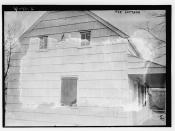Edgar Allen Poe, one of America's best known poets, may have been one of the most misunderstood writers of all times. Because his poems often depict scenes of violence, death and decay, people have often thought of Poe, not as the literary genius that he was, but as something of a "madman". For example, William Butler Yates claims that Poe's works were nothing short of ".... a vulgar and commonplace lunatic's attempt at writing." ( Yates Poetry ) Although Poe's unofficial title as "Master of the Macabre" may have earned him a place in the hearts of "horror buffs" worldwide, an analysis of his works would show that his writings were actually much deeper and more complex than his popular image. "The Bells" is one such poem. In it, the speaker appears to contemplate the four phases of life from childhood, to marriage, to conflict, and ultimately, death. To support these powerful messages, Poe relies primarily on rhyme, imaging, and tone.
From it's opening lines , the poem itself has an almost song-like quality to it. The repetition of the word 'bells', along with the pattern of masculine and end rhymes, such as in the lines "Keeping time, time, time/ In a sort of Runic rhyme," set up the basic structure. Poe also uses internal rhymes scattered throughout the poem. An example of this can be seen in the second stanza: "To the rhyming and the chiming of the bells!". Although Poe doesn't follow a typical rhyming scheme throughout, it should be noted that the first three lines in all four stanzas follow an AAA pattern.
In the opening stanza, the speaker directs our attention to the silver bells of youth. The mood seems to be one of childlike bliss, suggested by words such as merriment, melody and repetition...


